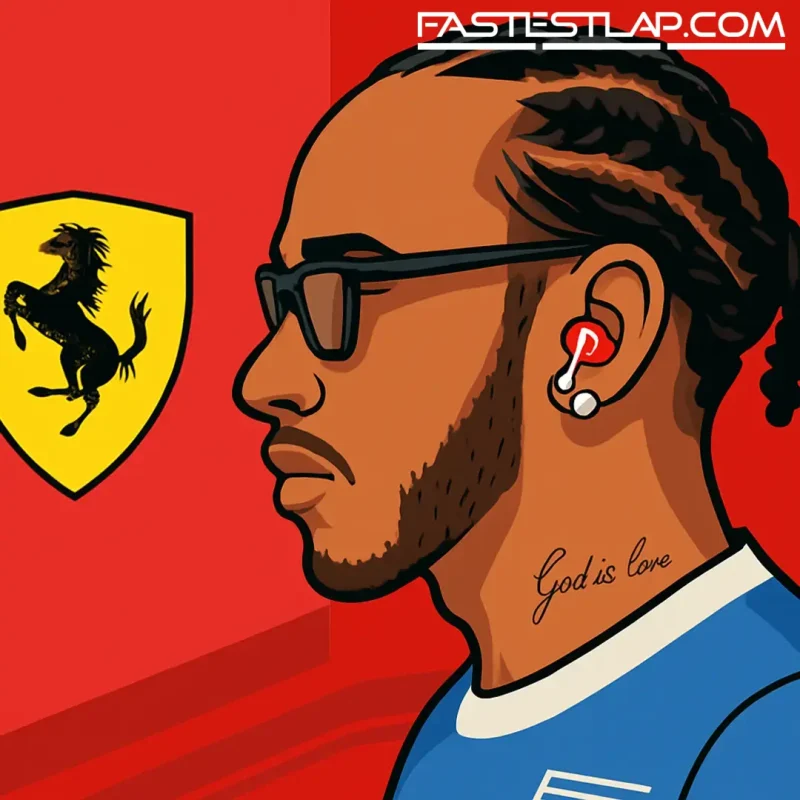Binotto still isn’t sold on Hamilton-to-Ferrari — and the results aren’t changing his mind
Lewis Hamilton in scarlet was always going to be a romance. The question was whether it would also be ruthless. Mattia Binotto, watching from the outside these days, isn’t convinced.
The former Ferrari team boss made his stance clear when the deal was announced: he wouldn’t have signed Hamilton. Not because he doubts the seven-time champion’s talent — “one of the greatest ever,” he told il Giornale — but because of timing and fit. Months into Hamilton’s first season at Maranello, Binotto hasn’t seen enough to revise that view.
Hamilton’s arrival pushed Carlos Sainz out and paired F1’s most decorated driver with Ferrari’s franchise star, Charles Leclerc. On paper, it was a superteam. On track, it’s been more sporadic than spectacular. There’s been a sprint win in Shanghai to prove the craft is still there, but the grand prix podiums in red have been elusive, and Leclerc has generally set the reference across Sundays. The gap between expectation and execution is what keeps voices like Binotto’s lingering in the background.
It’s not that Hamilton has turned up to simply drive what he’s given. Far from it. If anything, he’s thrown himself into Ferrari with a level of boardroom energy we don’t often hear about. In recent months he’s described a relentless internal push: meetings with John Elkann, Benedetto Vigna and Fred Vasseur; sessions with Loïc Serra and department heads; a steady flow of documents flagging structure, process and car philosophy.
“I’ve called lots of meetings with the heads of the team,” Hamilton explained earlier this summer. “I’ve sat with John, Benedetto and Fred in several meetings. I’ve sat with the head of our car development, with Loïc, also with the heads of different departments, talking about the engine for next year, front suspension, rear suspension — things that you want, issues that I have with this car. I’ve sent documents through the year… some of it’s structural adjustments we need to make as a team, the other is about the car. We did development for next year, tried the 2026 car for the first time and started work on that.”
That level of involvement invites inevitable comparisons with Michael Schumacher’s Ferrari era — especially with Binotto, who lived it from the inside. He’s careful not to reduce Schumacher’s success to a stack of memos. The German was, in his words, a “leader in terms of attitude and mentality,” operating in a tight triangle with Jean Todt and Luca di Montezemolo while driving standards higher across the factory. The flow of information was constant, but the power of it came from the culture that formed around it.
And that’s the nuance that matters now. Hamilton isn’t trying to re-enact 2000–04; different decade, different regulations, different Ferrari. He’s trying to accelerate a reset inside a team that’s been edging closer without quite cracking the code. The 2026 rules overhaul looms as a real chance to shuffle the order, and Hamilton’s made it clear he wants Ferrari to be ready on day one. But the sport doesn’t pause for 2026. There are still points to score, reputations to shape, and a teammate across the garage who remains a formidable benchmark.
Ferrari, for its part, bet on more than lap time when it signed Hamilton. It bet on gravitas, on the habits of a serial winner rubbing off, on someone who can take a good car and make it inevitable. That can work; history shows it. It can also take time; history shows that too. Binotto’s skepticism speaks to the here and now. Hamilton’s counter is that the bigger play is already underway, behind closed doors, in the details most of us won’t see until the next-generation car rolls out.
Both can be true at once. In the meantime, the romance keeps meeting the stopwatch every Sunday. And for all the noise, that remains the only argument that ever really changes minds in Maranello.




